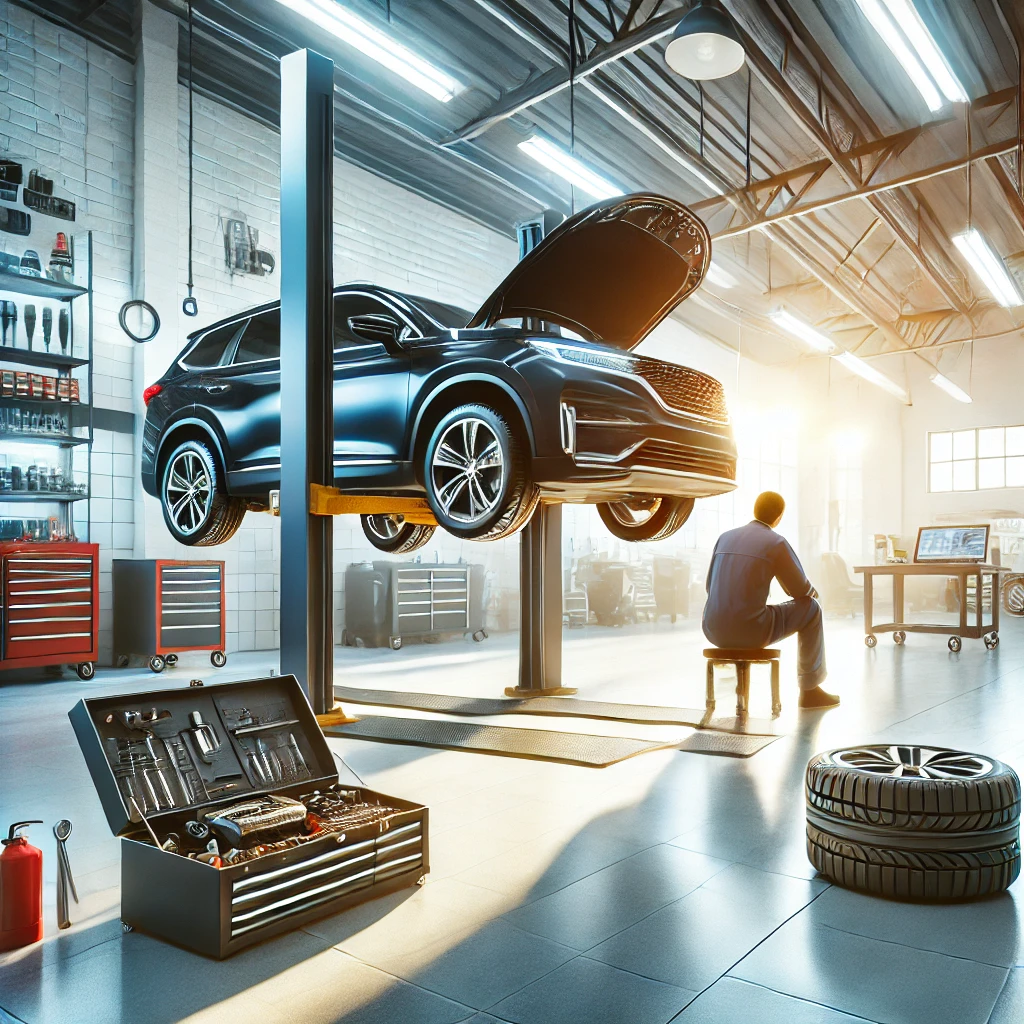Top Car Maintenance Tips for Long-Term Rentals
Maintaining a vehicle during a long-term rental is crucial for ensuring its reliability, performance, and longevity. Whether you are a renter looking to avoid unexpected breakdowns or a vendor striving to keep your fleet in top condition, a proactive approach to car care can save time, money, and frustration. This comprehensive guide outlines essential maintenance tips tailored specifically for long-term rental vehicles, helping you make the most out of every mile.
The Importance of Regular Maintenance for Long-Term Rentals
Proper maintenance is more than just a preventative measure—it is an investment in safety and efficiency. Rental cars are often subjected to extended usage, making regular care essential to avoid potential issues. Neglecting upkeep can result in costly repairs, reduced vehicle performance, and even accidents.
Regular maintenance keeps the vehicle’s key systems functioning optimally, such as the engine, tires, and brakes. Furthermore, it enhances fuel efficiency, saving renters money over the duration of their rental period. Vendors also benefit as well-maintained cars retain their market value and attract more customers, creating a win-win situation for all parties involved.
1. Monitor Engine Oil and Fluid Levels
One of the most critical aspects of car maintenance is keeping the engine oil and other fluids at optimal levels. Engine oil lubricates the engine components, reducing friction and preventing overheating. Similarly, fluids such as coolant, brake fluid, and transmission fluid are vital for the smooth operation of the car.
For long-term rentals, it is recommended to check engine oil levels every 3,000 to 5,000 miles. Replacing old or dirty oil ensures the engine performs efficiently and reduces the likelihood of costly repairs. Coolant levels should be inspected frequently to prevent the engine from overheating, particularly in extreme temperatures.
Quick Tip:
Always keep an eye on the dashboard for low fluid indicators and address them promptly to avoid potential damage.
2. Ensure Proper Tire Maintenance
Tires are fundamental to vehicle safety and efficiency. Underinflated or overinflated tires can compromise handling and increase the risk of blowouts. Similarly, worn-out tires reduce traction, especially on wet or uneven roads.
Use a tire pressure gauge to check tire inflation weekly, ensuring it aligns with the manufacturer’s recommended PSI. Properly inflated tires enhance fuel efficiency and reduce uneven wear. Additionally, inspect the tire tread regularly; replace tires when the tread depth falls below 2/32 inches to maintain grip and stability.
Rotating the tires every 5,000 to 7,000 miles ensures even wear across all tires, prolonging their lifespan and improving overall safety.
Pro Tip:
Keep a spare tire and a tire repair kit in the vehicle for emergencies.
3. Maintain Battery Health
A healthy battery is essential to keep the car running smoothly, especially for long-term rentals. Battery issues can lead to unexpected breakdowns, leaving renters stranded. Over time, corrosion can build up on battery terminals, reducing its efficiency.
Check the battery voltage regularly and ensure the terminals are clean and tightly connected. Use a mixture of baking soda and water to clean any visible corrosion. If the vehicle is not in use for an extended period, consider using a battery maintainer to prevent it from draining completely.
4. Pay Attention to Brakes
Brakes are one of the most critical safety features of a car. For long-term rentals, regular brake inspections are vital to ensure they function optimally. Signs of brake issues include squeaking or grinding noises, a spongy brake pedal, or reduced stopping power.
Schedule a brake inspection every 10,000 miles or sooner if you notice any unusual symptoms. Worn-out brake pads or damaged rotors should be replaced promptly to avoid compromising the vehicle’s safety.
Key Insight:
Driving in heavy traffic or on steep terrain can cause brakes to wear out faster, requiring more frequent maintenance.
5. Replace Air Filters for Better Performance
Air filters play a crucial role in maintaining engine efficiency by preventing dirt, debris, and contaminants from entering the engine. A clogged air filter can reduce engine performance and increase fuel consumption.
Check air filters every 12,000 to 15,000 miles and replace them if they appear dirty or clogged. This simple step can significantly improve the car’s performance and extend the engine’s life.
6. Keep the Car Clean Inside and Out
While mechanical maintenance is essential, maintaining the car’s cleanliness is equally important for long-term rentals. A clean car not only looks appealing but also prevents long-term damage caused by dirt, dust, and moisture.
Wash the car exterior every two weeks to remove grime and protect the paint from fading. Waxing the vehicle periodically adds an extra layer of protection. On the inside, vacuum the seats and floors weekly to maintain hygiene and prevent unpleasant odors.
Additional Tip:
Use a UV-protective cleaner on the dashboard and seats to prevent cracking and discoloration from sun exposure.
7. Follow the Manufacturer’s Maintenance Schedule
Every vehicle comes with a manufacturer-recommended maintenance schedule that outlines the optimal timing for servicing key components. Following this schedule ensures the car receives timely care, reducing the likelihood of breakdowns.
Keep a detailed log of all maintenance tasks, including oil changes, tire rotations, and inspections. This record can be valuable for vendors as it demonstrates the vehicle’s upkeep to potential renters or buyers.
8. Be Prepared for Extreme Weather Conditions
Extreme weather can take a toll on vehicles, making it crucial to take preventive measures. In hot climates, use sunshades to protect the interior from heat damage, and check the coolant levels more frequently. In colder climates, ensure the car has adequate antifreeze and use winter tires for better traction.
Parking the car in shaded or covered areas can further protect it from harsh weather conditions, reducing the risk of damage.
9. Address Warning Lights Immediately
Dashboard warning lights are often the first sign of potential issues. Ignoring these lights can lead to severe damage and expensive repairs.
Familiarize yourself with the meanings of common warning lights, such as the check engine light or low tire pressure indicator. Address these warnings promptly by consulting a mechanic or referring to the vehicle’s manual for guidance.
10. Carry Emergency Supplies
Being prepared for emergencies is essential for long-term rentals. An emergency kit should include essentials like jumper cables, a flashlight, a tire inflator, and basic tools. Having these items on hand can make a significant difference in unexpected situations.
Bonus Tip:
Include a copy of the car’s registration, insurance details, and roadside assistance contact numbers in the glove compartment.
People Also Search Queries
- How to maintain a rental car for long-term use?
- Best car care tips for renters
- Long-term car rental maintenance checklist
- How to protect your car from extreme weather




WP Rentals has been the best platform for me because of the people that I met, the money that i make, if any problem comes up costumer service is ALWAYS there. Literally the guys are trying their best! My profile has over 160 reviews and all my listings are book 3 months ahead!
In the past, these types of services have been used largely by thrifty tourists looking for the cheapest place they can find in a particular city. Now, however, more and more business travelers and professionals are looking to WP Rentals for a unique and memorable experience.
WP Rentals can benefit both hosts and travelers. Hosts get to meet people from around the world while making a little extra money, and travelers can often stay for less than the cost of a hotel room. In addition, many travelers enjoy accommodations that offer a different experience from standard hotels.
We want the 2015 WP Rentals to inspire, equip, and celebrate you. And we want to gather with the host community to learn how to do what we do better. Let’s make this year’s summit one to remember! Stay tuned as we reveal exciting details in the days to come.